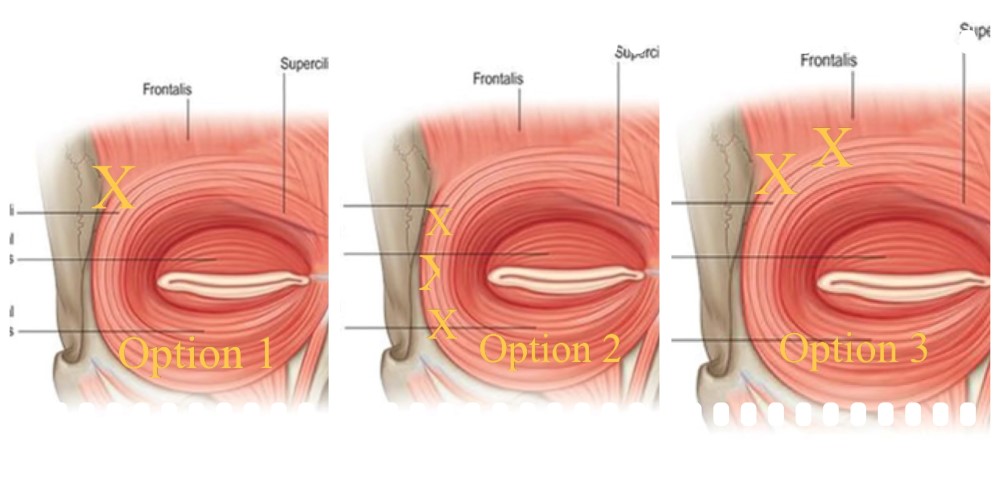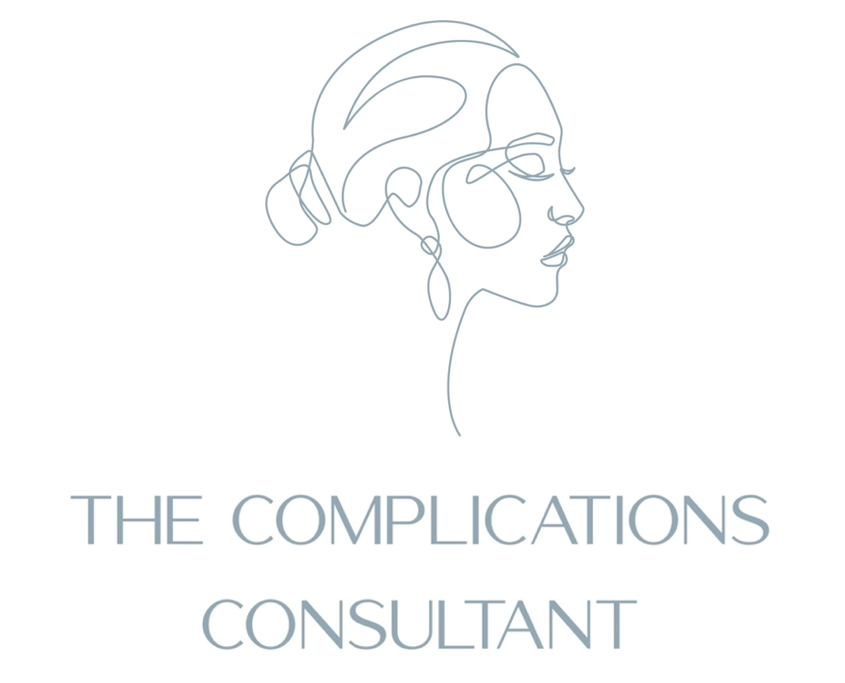Management
The real topic that needs consideration here is the fact that two opposing muscle groups have lost their balance. The elevators and depressors. Although the aesthetic complaint is in the forehead, the anatomical cause could be from lower down in the glabella complex, attributing to a weakness in the elevator. Therefore, treatment of the depressors could in theory rebalance the position of the brows.
Testing of the strength of the elevators AND the depressors will give a more accurate diagnosis and therefore better and correct management. If orbicularis oculi at all and there is some movement of the frontalis muscle, there is hopeful chance it will be possible to lift the brow with further treatment of the depressor muscles.
Lateral eyebrow ptosis can be effectively treated by reducing depressor strength by restoring brow position at rest. Here’s how;
OPTION 1is to inject 4 units at the tail of the eyebrow in the orbicularis oculi muscles superior lateral component.
OPTION 2 Treat the lateral orbicularis oculi as you would for a crow’s feet treatment this might be 3 injections of 4 units as per the licenced dose.
OPTION 3 If you have already treated the lateral canthal lines, and there’s limited movement, check for movement of the superior aspect of orbicularis oculi underneath the eyebrow. If there is strong depressor activity you can place 1unit injections underneath the arch and tail of the brow very superficially to reduce risk of affecting the eyelid or lacrimal gland.
In a case scenario where there is little to no movement of the glabella complex there is very little to be done except wait for it to improve as the toxin wears off organically.

IF there’s some medial elevator activity coupled with a drop from the glabella complex pulling the brows down. You can likely improve the problem in one of 4 ways
- Treat the procerus alone, reducing the downward pull of the most medial part of the forehead. Inject 4 units into the body of the muscle.
- Treat procerus and depressor supercilii on either side. Inject 4 units into each muscle, a total of 12.
- Treat the entire glabella complex, with a usual dose of 20 units.
- Treat all the above and consider medial orbicularis oculi if it appears active- it can be treated with small doses very superficially. Please note this area is a higher risk for eyelid ptosis particularly if you go too deep or use higher doses.


